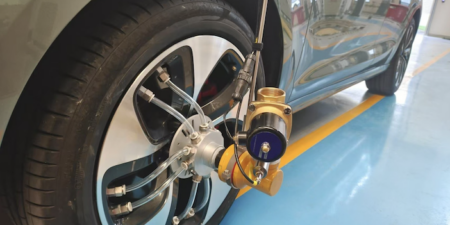The National Highway Transportation Safety Commission (NHTSA) has finalised a Federal Motor Vehicle Safety Standard that will require pedestrian automatic emergency braking (PAEB) systems to be fitted on all new passenger cars and light trucks in the USA by September 2029.
More than three-quarters of pedestrian fatalities, and about half of pedestrian injuries, occur in hours of darkness. The final rule places an upper bound on the requirement that a PAEB system operate at 73 km/h (45.4mph) in daylight or darkness, requiring automakers to greatly improve the performance of existing PAEB systems by the end of the decade.
Automotive thermal cameras detect heat energy, enabling them to detect and classify pedestrians at distances several times farther than standard light-vehicle headlights can illuminate, as confirmed by research conducted by VSI Labs. In essence, PAEB systems equipped with a thermal camera can detect pedestrians at night and in low-visibility conditions at a greater distance, with improved accuracy and at higher vehicle speeds. Better detection accuracy enhances safety, and also translates into fewer false-positive scenarios, improving reliability.
When combined with existing radar- and visible light camera-based AEB systems, thermal cameras provide improved performance in other types of adverse conditions, such as fog, rain, smoke, sun glare, and high-contrast, sunlight-shadow scenarios such as when a vehicle is emerging from a tunnel or travelling through an underpass on a bright day. Thermal integration into AEB systems can also help achieve enhanced safety in corner cases, such as detection of large animals on the roadway at night.
Teledyne FLIR, a supplier of intelligent sensing technologies, has commended NHTSA on the ruling. “Existing AEB hardware on light vehicles primarily consists of radar or a combination of radar and visible cameras,” said Paul Clayton, vice president and general manager of Teledyne FLIR.
“To achieve enhanced safety at the new PAEB required speeds, lighting conditions, and false-positive requirements, automakers should adopt sensing technologies that are more effective at night and in low-visibility conditions,” he added. “Thermal imaging technology integrated into existing AEB systems can help automotive manufacturers meet the new requirements and save lives.”
Teledyne is an expert in this area, with more than 1.2 million cars fitted with its FLIR thermal sensors as part of their driver warning systems. Through a collaboration with tier-one automotive supplier Valeo, Teledyne FLIR is enabling automotive OEMs to rapidly integrate thermal imaging into AEB systems. This includes the world’s first Automotive Safety Integrity Level (ASIL) B thermal camera from Teledyne FLIR, announced in January.





